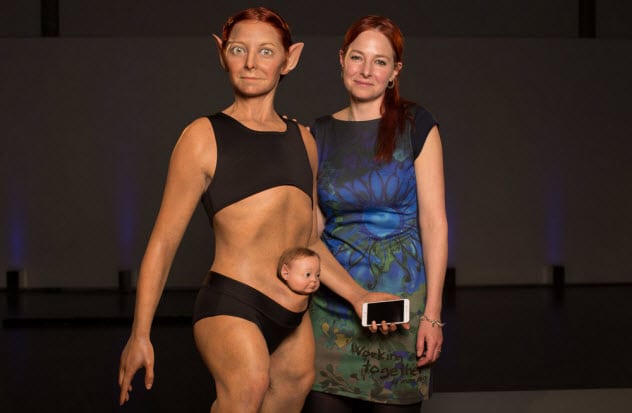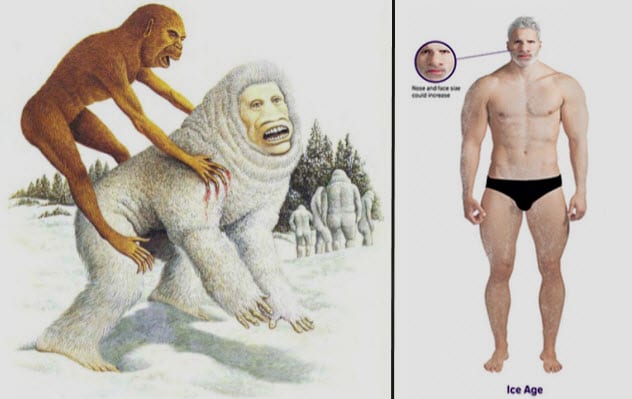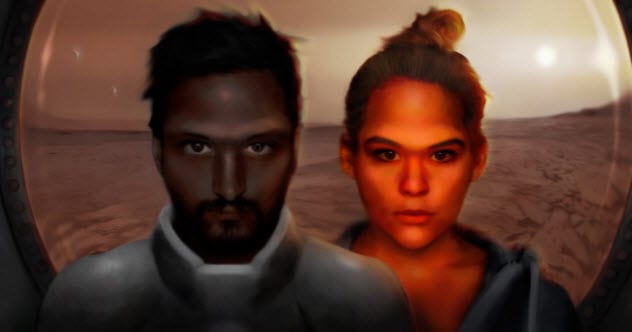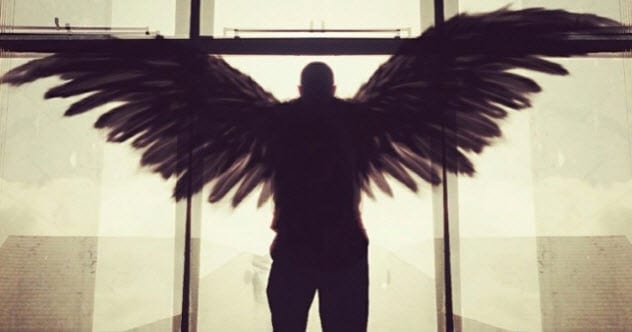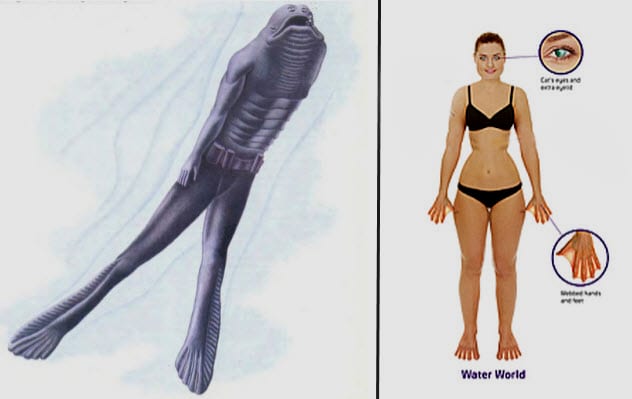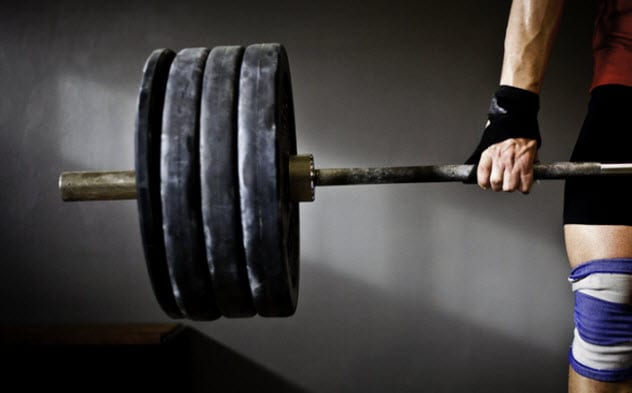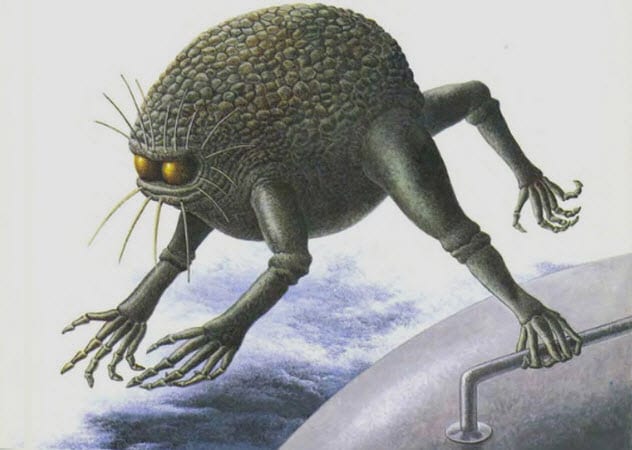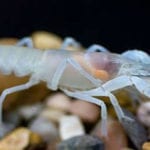But what if the history of the origin of human beings had been different? What if the environmental conditions that forced us to evolve had been distinct or if our ancestors had been others? We now take our physical nature for granted, including our appearance and abilities. But had human evolution followed another path, it is likely that our appearance would not be “human” at all. In this list, we will see from a scientific point of view the 10 most radical bodies that humans would have had under other evolutionary conditions.
10 The Perfect Human Body
Evolutionary changes in living beings are not immediate. Even when the environment suddenly changes, the physical adaptations required to survive in it can take thousands or millions of years to occur. That is why, after millennia of progress as a civilization, humans are not as well adapted to our world as we would like. Many of our physical features are obsolete, developed in times when our ancestors lived more “naturally,” or primitively. But now we need other adaptations to survive in urban societies, and science claims to know what those necessary changes would be. The resulting body after such modifications, however, is quite bizarre. Based on a scan of her own body, British biologist Alice Roberts applied the adaptations that scientists believe are necessary for our modern lives. Although the final body is far from our typical concept of beauty, Roberts says that it is the “perfect human body.” Among some of its most notable features, the eyes are bigger to eliminate blind spots and the ears are larger to capture even the most subtle sounds. Its legs are made to run at high speeds, and its spine is shorter to better support body weight. As natural births produce great pain for women, childbirth is solved with a bag in the abdomen to carry the newborn. Yes, the “perfect humans” would be marsupials like kangaroos. Their lungs would be like those of birds to better oxygenate the blood, and their hearts would be more complex like those of dogs.[1] To complete the picture, the skin of these humans could change its tonality, thus avoiding the risk of skin cancer.
9 Humans Adapted To Survive Car Accidents
Human beings have a natural speed limit for the sake of our health. For millennia, we used only the power of our legs to move. Then we created the first self-propelled vehicles, which were capable of moving us at higher speeds. But evidently, an artificial invention like that has its negative effects on unadapted bodies like ours. A traffic accident at low speed can cause serious physical injuries, while a car crash at high speeds can turn us into meat puree. So, how would we be if we had evolved to withstand traffic accidents? Well, experts in Australia have formulated an answer that is both interesting and creepy. Meet Graham. Graham is the result of a campaign against traffic accidents conducted by Australia’s Transport Accident Commission (TAC). He is supposed to be a crash-proof man, so what is most important in his anatomy is not aesthetics but functionality. Graham has a thick skin that is resistant to scratches and small cuts. He also has a flat and fat-covered face to protect the ears and nose from sudden impacts. Although his brain is the same as ours, his skull is bigger, thicker, and full of soft tissues to absorb the force of the collision during an accident. The man has no neck because it breaks easily in accidents.[2] Graham’s ribs are covered by tissue bags that protrude like extra nipples and absorb impacts as if they were airbags. The bones of his legs are modified to act as “springs” that allow the man to quickly flee from the scene of an accident. In turn, Graham’s knees can rotate freely so that the legs do not break at that point. The Graham sculpture has received many awards and much recognition around the world due to its ingenious way of showing us that we are far from being car-crash proof.
8 The Ice Man
Let’s imagine that our planet is covered in ice. Perhaps an asteroid impact darkened the atmosphere and the temperature dropped or the climate change reached devastating levels. In any case, humans would need changes in their bodies to survive the extreme cold or the snowstorms. Let’s see what some of these changes might be. With less sunlight, vitamin D levels in the human body decrease. To counteract this, people living on the ice will have paler skin and hair to absorb more UV radiation. In turn, the body hair of these humans will grow more abundantly to protect them from the cold. In these conditions, the human body will also become taller and more muscular. Facial features will increase in size so that the air warms up before entering the lungs when breathing.[3] Other more advanced characteristics for this type of climate would be a claw on each foot to walk better on ice and a huge amount of body fat to keep humans warm. In conditions of extreme cold, these creatures could also hide their faces between a thick layer of fat and fur around the neck.
7 The Dinosauroid
About 66 million years ago, a cataclysmic event wiped the dinosaurs from the face of the Earth. But what if such extinction had not happened and the dinosaurs had continued inhabiting the planet? Probably, these animals would have continued to evolve. Many works of fiction describe dinosaurs in today’s world with only a few changes after so many millions of years. But in reality, this would not be the case and their appearance would be more humanoid than dinosaur-like. This is what paleontologist Dale Russell believed. In the last century, it was discovered that the dinosaur genus Troodon had a very large brain compared to its body. This indicated that the Troodon had a remarkable intelligence. Thus, Russell believed that this animal was more likely to evolve into an advanced creature if the conditions were right. So, in 1982, Russell joined taxidermist Ron Seguin to create a life-size replica of the creature that Russell would call Dinosauroid. At 1.3 meters (4.3 feet) high, this model shows a reptilian-looking humanoid next to his ancestor, a Troodon.[4] For millions of years, the Troodon continued to increase its brain mass. So its skull also grew to contain the brain. To hold such a large skull, the neck of the Troodon shortened and became more like that of humans. In turn, the neck’s restructuring forced the Troodon to straighten up and eventually lose the tail. This is how the dinosauroid was born. The reptilian man would have had big eyes with binocular vision, scaly skin, and hands with three fingers and opposable thumbs. The most notable feature is that the dinosauroid would have been viviparous. It wouldn’t have laid eggs as reptiles do. Other scientists have proposed evolutionary models closer to the original form of dinosaurs, but it is clear that Russell’s dinosauroid is one of the most striking concepts.
6 True Martians
With just a few million years, life-forms on Earth can mutate and evolve into new and radically different species. Factors such as climate change or migrations have caused some species to become totally different beings. Now, suppose one of those factors would have been to live on another planet—like Mars, for example. It is impossible to know for sure what we would look like in that environment or if we would still be human. But we could certainly expect our bodies to be very different. Scientists have speculated on what we would look like in a few thousand years if we lived on the Red Planet. From this, we can list several physical features of a human who evolved on Mars. First of all, humans living on Mars would be taller than us because the lack of gravity would not cause the spine to compress as much as on Earth. In addition, such individuals would have thicker bones and larger heads.[5] The lack of sunlight would cause the eyes of humans on Mars to be larger. And since the Red Planet is constantly bombarded with lethal radiation, their skin would be covered with a UV-proof pigment similar to that of carrots. In the end, future Martians would have orange skin. The same dose of radiation on Mars would lead to the humans there mutating faster than their Earth counterparts. So, in just a few hundred years, another species different from humans could emerge and evolve.
5 Human Birds
Humans are notoriously different from birds. They belong to another evolutionary branch, and as such, they have very little in common with creatures like us. However, it is worth speculating on what would have happened if birds had evolved as the dominant species instead of humans—with the result being a hybrid between man and bird. What differences would this “human bird” have when compared to our current appearance? First, the human bird would be covered with feathers. (Hair or fur covering the body is a feature exclusive to mammals.) At the same time, the human bird would have bones that are almost hollow, it would barely have teeth, and its musculature would be much lighter than that of humans. Otherwise, the “bird-man” would be too heavy to fly. However, both the human brain and the flight mechanism would consume a lot of energy. So the bird-man could not have both virtues—it would have to choose between flying and being smart. To make matters worse, the development of tools would make the winged human become sedentary, flying less and less. As for its arms, there are two options. Either they would be replaced by wings with fingers, like those in the dinosaur genus Archaeopteryx, or the creature would retain both the arms and wings. In the latter case, its skeleton would probably undergo major modifications compared to the human skeleton.[6] With reduced flight ability, the human bird would be limited to living in the trees and going up and down by gliding. The weirdest thing of all is that this creature would lay eggs instead of giving birth to offspring like mammals do. Although the chance of birds evolving into humans was always impossible, this could change in the future. Scientists believe they can insert wings in human embryos once they decipher the genetic code of birds.
4 Evolving To Live Underwater
Geologic findings show that the evolutionary branch of fish separated from terrestrial vertebrates 400 million years ago. From that point to now, aquatic life-forms have differentiated themselves in significant ways from humans. For that reason, if we wanted to live underwater, we would need a lot of physical changes. Fortunately for us, scientists have described several ways that humans would appear in an underwater world. Starting with the theory with the lighter changes, humans would have longer fingers with skin connections between each finger. Thus, we would become palmipeds like ducks. Our eyes would develop a special membrane to see in low-light conditions, just like cats. In addition, we would have much less body hair to move faster through water and we would store more fat to withstand the cold of the watery depths. A more “hard-core” theory also suggests that humans would be web-footed. But their legs would join in a single limb, like a fish tail, to save more energy when swimming. However, the most extreme description of “aquatic people” states that they would have gills along their chests. Meanwhile, their legs would be like fish fins and their arms would remain the same as those of humans.[7] The neck would be connected almost to the back of the head so that the creature could see forward while swimming in a horizontal position. This would cause the human living underwater to have a frog-like face and communicate with simple grunts.
3 The Humanoid Plant
This is a crazy but thought-provoking question: What if humans had evolved from plants? Although it sounds far-fetched, there are at least two factors that lead us to think about the possibility of such a scenario. First, plants can communicate with each other using a system that resembles a primitive form of an animal’s nervous system. This is because plants and animals come from a common ancestor. Second, the most basic definition for “plant” is a living organism that produces its own food by combining nutrients and sunlight in a process called photosynthesis. If we could feed ourselves by photosynthesis, we would be, in essence, “human plants.” But what would we look like? Well, the most remarkable point is that our bodies would be covered by microscopic organs called chloroplasts. These organs are responsible for photosynthesis in plants and are green in color.[8] As a result, a “plant-man” would have green skin. However, the process of photosynthesis would not give us enough energy to survive, so our bodies would probably have branches and leaves to capture more sunlight. Meanwhile, our skin would have to be much more porous to exchange carbon dioxide like plants do. It also happens that the human brain consumes a large part of the body’s energy. So, if human plants want to keep their intelligence, they would have to stand still under the sunlight for as long as possible. In the end, the life of the humanoid plant would be incredibly boring.
2 Stronger People Under Stronger Gravity
As all life on Earth is adapted to the gravity level of this planet, it is interesting to think about what we would be like in a more massive world with stronger gravity. For starters, some physical aspects would not change. Humans adapted to high gravity would continue to have limbs for moving, eyes for seeing, and a mouth for feeding. They would still have hands because manipulating objects is fundamental to intelligent life-forms. But beyond these characteristics, their bodies would begin to change from ours. In a high-gravity environment, a fall from low altitude could be deadly. So, terrestrial creatures would want to be as close as possible to the ground. We can expect humans in high gravity to be short, and our current bipedal posture would no longer be efficient. Instead, an intelligent creature would walk with six legs to better distribute the weight. At the same time, there is the problem of blood pressure. In high-gravity conditions, the heart must work harder to pump blood to the head and limbs. So it is likely that people adapted to such conditions would have stronger hearts which are closer to the brain. Undoubtedly, the most visible characteristic of humans under stronger gravity conditions would be a higher bone and muscle density. Their bones would be thicker to support the body structure, and their muscles would be bigger to be able to move without much effort. Studies in animals also suggest that humans in this extreme environment would have a much lower amount of body fat than humans on Earth.[9]
1 The Vacuumorph
We have already seen what humans would look like after evolving to live on other planets. What would be the next step? In fact, the ultimate step would be humans adapted to live in the vacuum of outer space, the most hostile environment for life. Incredibly, the human imagination has already theorized about the appearance of such a creature. And the result comes from a work of fiction by the Scottish paleontologist and writer Dougal Dixon. A few centuries in the future, genetic engineering would allow the alteration of humans to adapt them to specific conditions. To build spacecraft directly in orbit, we would create humanoid beings called vacuumorphs. These beings would be adapted to survive in the vacuum of space without gravity and without any special protection.[10] The body of the vacuumorph would be covered by a spherical shell, rigid and impermeable, to protect the internal organs from the lack of pressure. This creature would still have arms and legs (although severely atrophied) as well as prehensile feet to walk on the hulls of spaceships. The vacuumorph would have eyes, too. However, they would be protected from the vacuum by a “sealed lens” and tissue folds to cover them to hide them from solar radiation. The vacuumorph would also develop new organs, like a third lung to store extra oxygen and a fourth one to accumulate carbon dioxide and other waste. Then the creature would eject such waste under pressure to propel itself through the vacuum of space. Although this fictional species would be genetically modified and unable to reproduce naturally, vacuumorphs give us an idea of the radical aspect we would have if our millennia of history had developed outside the Earth. Brian is an economy student who is passionate about graphic design and an avid enthusiast of the art of writing.
